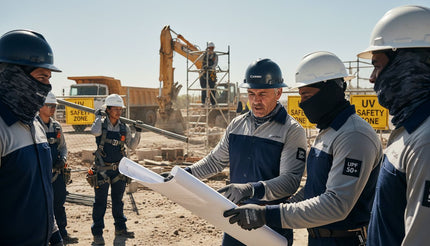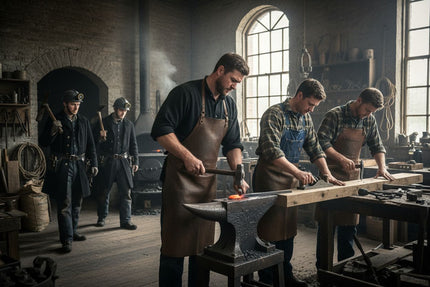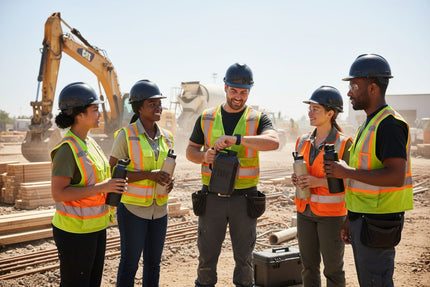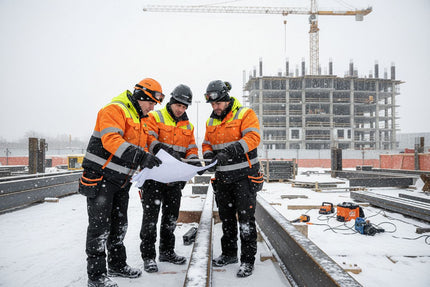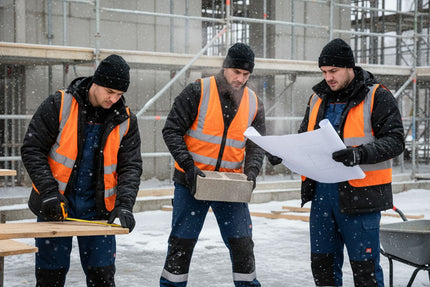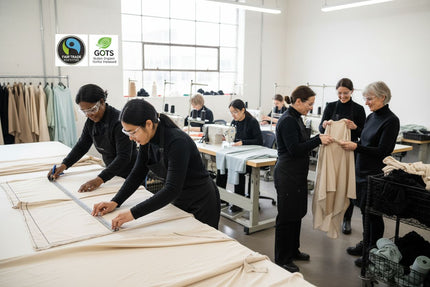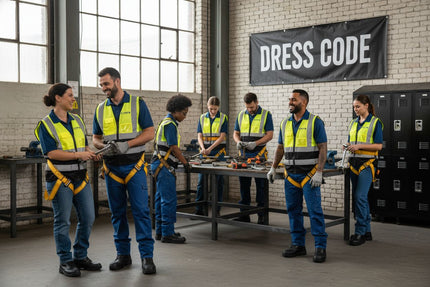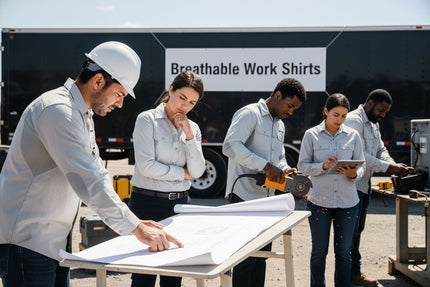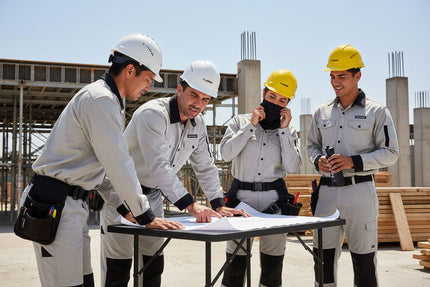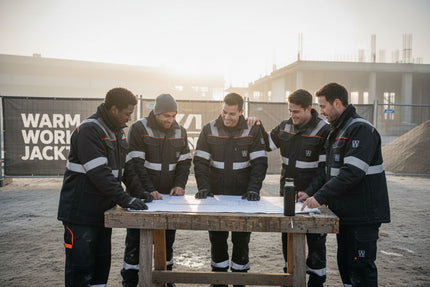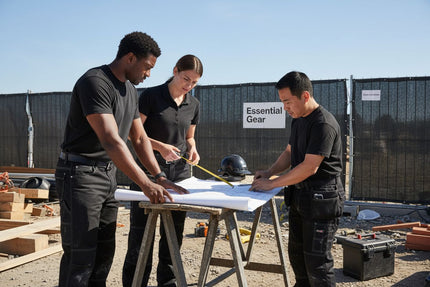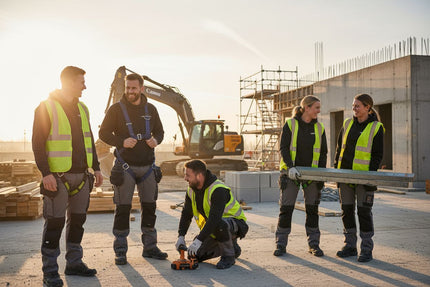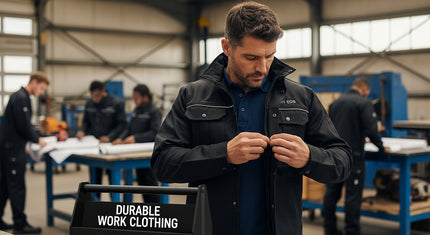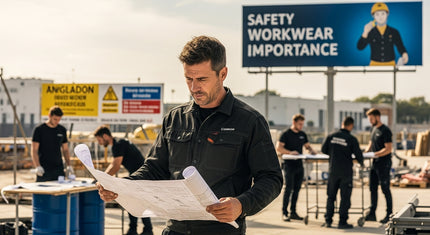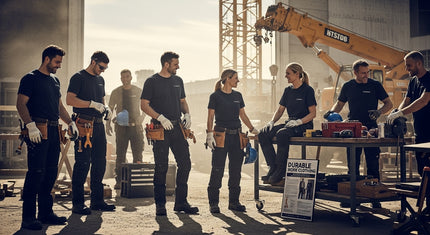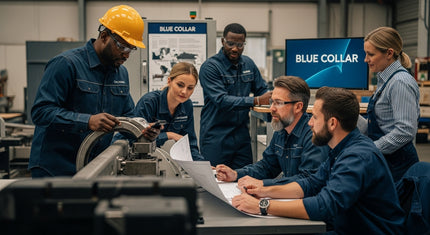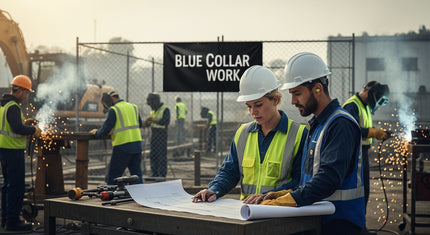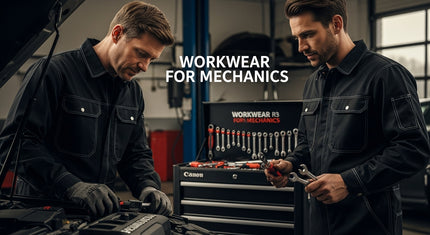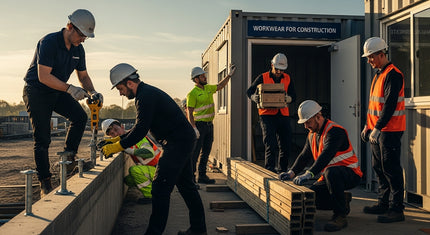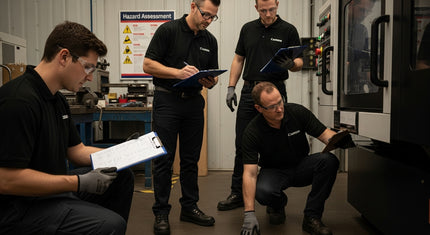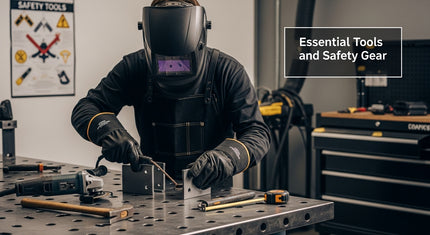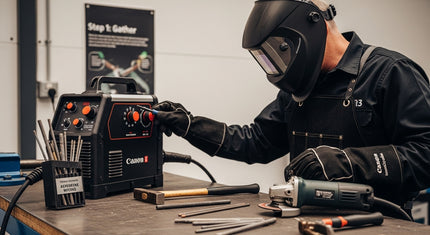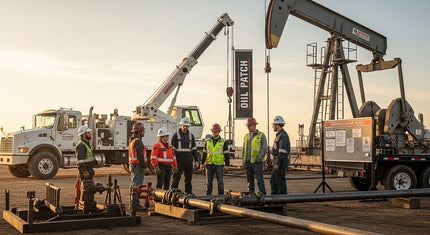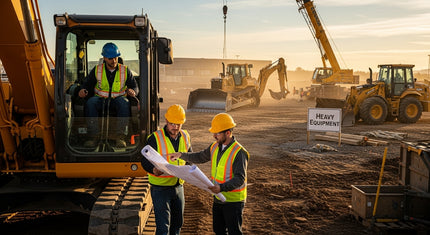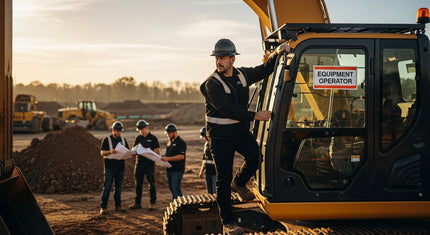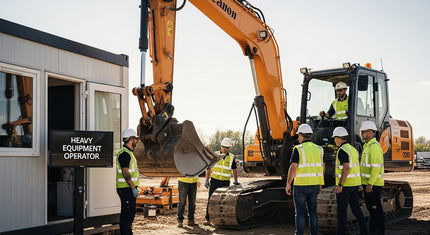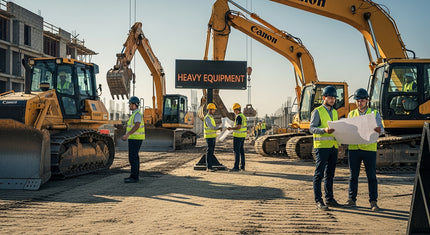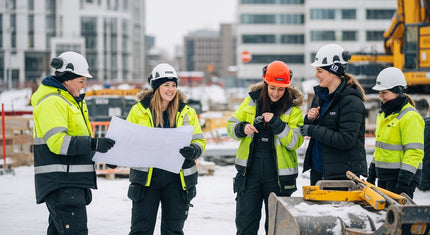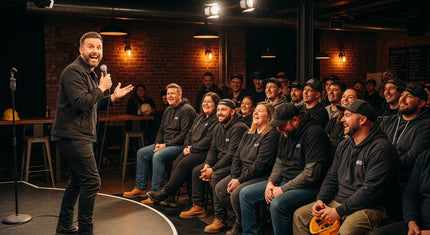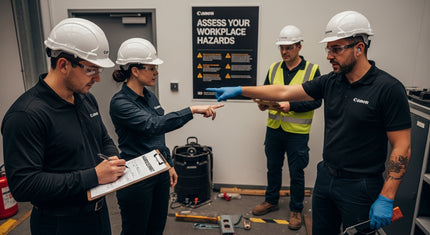Blue-collar jobs are often described as the backbone of American life. Think about this for a second. Electricians now average $61,590 a year, with 11 percent job growth expected by 2033. That sounds steady but most people picture these careers as physically demanding, low skilled, or just a paycheck. The reality is these trades offer more than security or good salaries—they create lasting communities, build self-worth, and offer a sense of pride you won’t find behind a desk.
Table of Contents
- What Is A Blue Collar Job?
- Top Blue Collar Careers And Trades
- Choosing Durable Gear And Workwear
- Blue Collar Lifestyle And Community
Quick Summary
| Takeaway | Explanation |
|---|---|
| Blue-collar jobs are critical to the economy. | These roles include construction, mechanics, and skilled trades essential for infrastructure and daily operations. |
| High-skilled blue-collar roles offer job security. | Careers such as electricians and HVAC technicians provide competitive salaries and opportunities for growth in demand. |
| Choosing durable workwear is essential for safety. | Proper gear protects against workplace hazards and contributes to professional identity, ensuring comfort and performance. |
| Community and support networks enhance well-being. | Strong connections among blue-collar workers foster resilience, mentorship, and shared problem-solving capabilities. |
| Apprenticeships provide a pathway to successful careers. | Training programs allow individuals to earn while learning, minimizing student debt and enhancing skill development. |
What is a Blue Collar Job?
Blue-collar jobs represent the backbone of America’s workforce, encompassing skilled and manual labor roles that keep our economy moving. These jobs are characterized by hands-on work, technical expertise, and physical skill sets that require precision, strength, and specialized training.
Defining Blue-Collar Work
According to the U.S. Bureau of Labor Statistics, blue-collar occupations include a wide range of critical professions such as construction workers, mechanics, electricians, welders, janitors, sheet metal workers, and painters. Unlike white-collar jobs that typically involve office-based work, blue-collar roles demand physical labor, technical knowledge, and on-site performance.
These jobs are not just about manual work they represent complex skill sets that require extensive training, apprenticeships, and professional certifications. Labor statistics reveal that blue-collar occupations are strategically divided into high-skilled and low-skilled categories, reflecting the nuanced expertise required in different sectors.
Skill Levels and Professional Diversity
Blue-collar work encompasses an impressive spectrum of professional expertise. High-skilled categories include protective service workers, personal care technicians, and installation and maintenance professionals. These roles demand advanced technical training, specialized equipment knowledge, and often require certifications that demonstrate professional competence.
Low-skilled blue-collar jobs include cleaning and maintenance, agricultural work, and general labor positions. While these roles might seem straightforward, they are essential to infrastructure, agriculture, and various industrial processes. Each job requires dedication, physical stamina, and a commitment to quality work.
The misconception that blue-collar jobs are less valuable or require less intelligence is fundamentally incorrect. These professionals are skilled technicians who solve complex problems, operate sophisticated machinery, and maintain critical infrastructure that keeps our society functioning. From constructing buildings to maintaining electrical systems, blue-collar workers are the unsung heroes who transform theoretical designs into tangible realities.
Modern blue-collar careers offer competitive salaries, opportunities for advancement, and the satisfaction of creating something tangible. Many trades provide apprenticeship programs, allowing individuals to earn while they learn, and develop careers with significant earning potential and job security. The evolving technological landscape continues to enhance these roles, introducing advanced tools and techniques that make blue-collar work more sophisticated and engaging than ever before.
Top Blue Collar Careers and Trades
Blue-collar careers offer diverse and lucrative opportunities across multiple industries, providing robust career paths for skilled professionals who prefer hands-on work and tangible results. These trades represent critical infrastructure support and technological advancement in our modern economy.
High-Demand Technical Trades
The landscape of blue-collar careers is evolving rapidly, with technological innovation creating exciting opportunities. Explore the Trades reports compelling statistics about emerging career paths. Electricians, for instance, have an impressive average salary of $61,590 and a projected job growth of 11% from 2023 to 2033. Similarly, plumbers earn around $61,550 annually with a steady 6% job growth projection.
The electrical and mechanical sectors offer particularly promising career trajectories. According to the U.S. Bureau of Labor Statistics, industrial machinery mechanics can expect significant employment opportunities, with projections indicating growth of 16% between 2021 and 2031. Electrical power-line installers and repairers represent another critical trade, with 15,249 active apprentices in fiscal year 2022.
Here’s a table comparing the average salaries and job growth projections for various high-demand blue-collar careers mentioned in this article. This helps visualize the earning potential and future opportunities across these professions.
| Career | Average Salary (USD) | Projected Job Growth (2023-2033) |
|---|---|---|
| Electrician | $61,590 | 11% |
| Plumber | $61,550 | 6% |
| Industrial Machinery Mechanic | — | 16% (2021-2031) |
| Electrical Power-Line Installer/Repairer | — | 15,249 active apprentices (2022) |
| HVAC Technician | $57,300 | 9% |
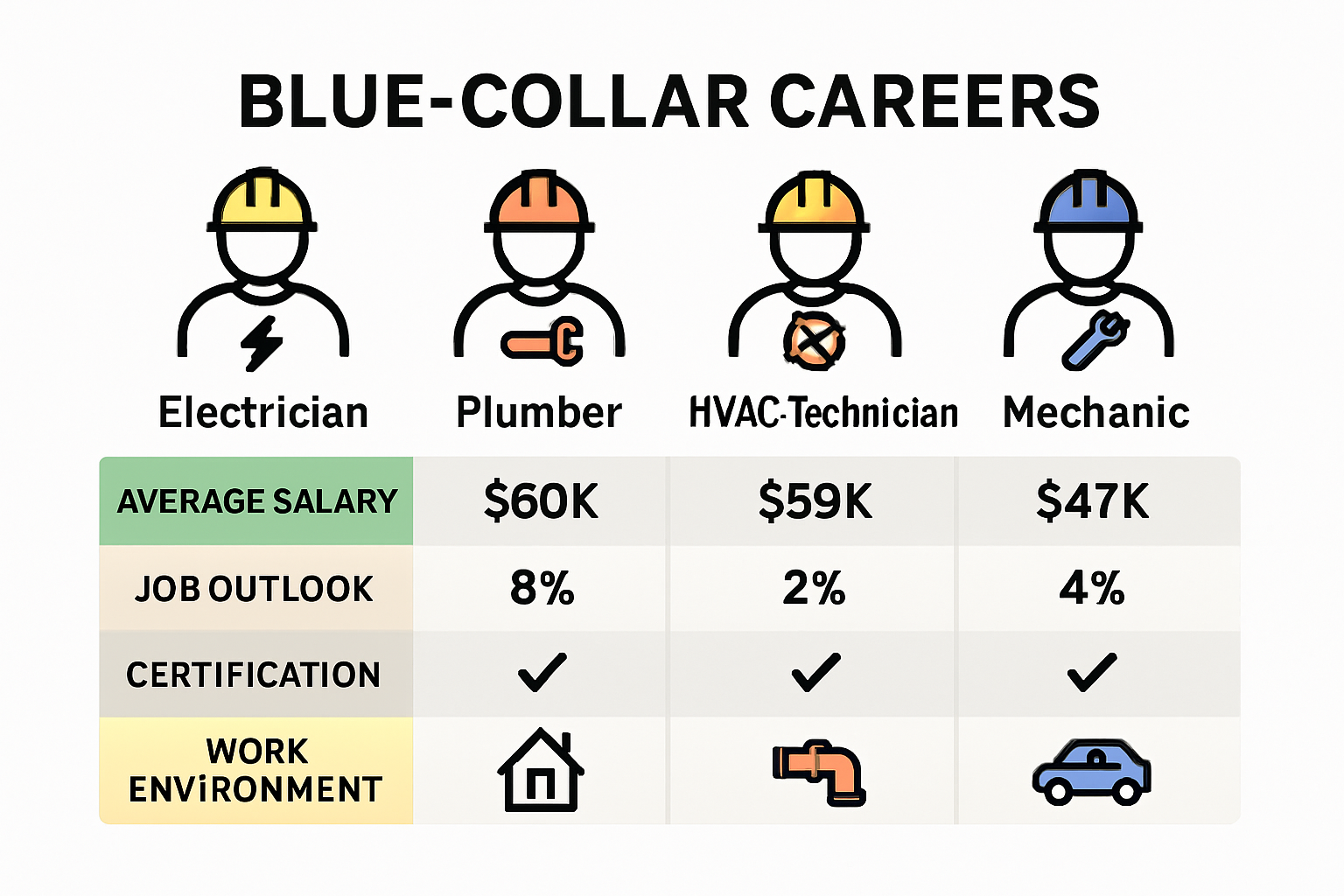
Diverse Career Pathways in Blue-Collar Work
Blue-collar careers span far beyond traditional construction and mechanical roles. The U.S. Office of Personnel Management highlights fascinating diversity in federal blue-collar employment. Key sectors include custodial work, maintenance mechanics, aircraft mechanics, food service workers, and sheet metal mechanics.
HVAC technicians present another compelling career option, with an average salary of $57,300 and projected job growth of 9%. These professionals play a crucial role in maintaining comfortable and efficient environmental systems in residential, commercial, and industrial settings.
For those interested in specialized career paths, read more about emerging opportunities in trades gear and professional development. The modern blue-collar workforce requires not just skill, but also adaptability and continuous learning.
Each trade offers unique advantages: competitive salaries, job security, minimal student debt compared to traditional four-year degrees, and the satisfaction of solving real-world problems. Apprenticeship programs provide structured pathways for skill development, allowing individuals to earn while they learn and build sustainable, rewarding careers.
The future of blue-collar work is bright, driven by technological advancements, infrastructure needs, and the ongoing demand for skilled professionals who can bridge theoretical knowledge with practical execution. From maintaining critical electrical grids to constructing complex machinery, these careers are the backbone of economic progress and technological innovation.
Choosing Durable Gear and Workwear
Durable workwear is more than just clothing it is a critical component of safety, performance, and professional identity for blue-collar workers. Selecting the right gear can mean the difference between comfort and compromise, protection and vulnerability in challenging work environments.
Safety and Performance Considerations
The Occupational Safety and Health Administration emphasizes the crucial role of workwear in protecting workers from occupational hazards. Professional-grade apparel must meet rigorous safety standards, offering protection against environmental risks, mechanical dangers, and potential workplace accidents.
Key performance features to consider include:
- Durability: Fabric that withstands repeated washing and harsh conditions
- Flexibility: Allowing full range of motion during complex tasks
- Protection: Resistance to chemicals, heat, and potential workplace hazards
For those seeking comprehensive insights into professional workwear selection, discover our essential guide to modern work apparel.
Sustainability and Material Selection
Modern blue-collar professionals increasingly prioritize sustainable workwear options. The Washington State Department of Enterprise Services recommends selecting clothing made from natural fibers and recycled materials. This approach not only supports environmental responsibility but also ensures long-lasting, high-performance gear.
International labor standards, as outlined by the International Labour Organization, provide comprehensive guidelines for selecting workwear that balances safety, comfort, and sustainability. These standards emphasize the importance of choosing apparel that protects workers while minimizing environmental impact.
When selecting workwear, professionals should consider multiple factors:
The following table summarizes the most important factors to consider when selecting durable workwear for blue-collar professionals. Use this checklist to evaluate gear and apparel choices for safety, performance, and sustainability.
| Factor | Description |
|---|---|
| Durability | Withstands repeated washing and harsh working conditions |
| Flexibility | Allows full range of motion during physically demanding tasks |
| Protection | Offers resistance to chemicals, heat, and specific workplace hazards |
| Comfort & Mobility | Ensures comfort during long shifts and improves task performance |
| Material Sustainability | Made from natural fibers or recycled materials for lower environmental impact |
| Cost-Effectiveness | Offers longevity and performance to justify long-term investment |
- Material composition and durability
- Specialized protection for specific industry risks
- Comfort and mobility
- Environmental sustainability
- Long-term cost-effectiveness
The evolution of workwear technology has transformed these essential garments from simple protective clothing to sophisticated performance gear. Advanced fabrics now offer enhanced moisture-wicking properties, temperature regulation, and increased durability. Specialized treatments can provide additional protection against stains, chemicals, and environmental hazards.
For blue-collar workers, workwear is an investment in personal safety and professional performance. High-quality gear represents more than clothing it is a critical tool that supports productivity, protects against workplace risks, and reflects professional pride. By carefully selecting durable, well-designed workwear, professionals can ensure they are equipped to meet the challenges of their demanding roles with confidence and comfort.
Blue Collar Lifestyle and Community
The blue-collar lifestyle transcends mere employment it represents a robust culture of hard work, resilience, skill, and community connection that defines millions of American workers. This unique way of life is characterized by practical skills, strong interpersonal bonds, and a profound commitment to tangible, meaningful labor.
Work Perceptions and Professional Identity
Pew Research Center reveals fascinating insights into blue-collar workers’ professional perspectives. While 54% view their jobs as ‘just a way to get by,’ this statistic masks a deeper narrative of professional pride and craftsmanship. Only 33% consider their work a career, yet this minority represents a powerful subset of workers deeply invested in their trades.
Blue-collar professionals often define themselves through their skills, taking pride in solving complex problems, mastering intricate techniques, and producing tangible results. Their identity is closely linked to their ability to create, repair, and maintain critical infrastructure that keeps society functioning.
Community Health and Well-being
Research from Washington University in St. Louis highlights the profound connection between stable living conditions and worker well-being. Homeownership among blue-collar workers correlates with reduced economic strain, lower depression rates, and decreased problematic alcohol use. This finding underscores the importance of financial stability and community roots for these hardworking professionals.
Workplace health promotion presents unique challenges for blue-collar communities. A recent scoping review noted barriers including inconvenient scheduling and limited peer support. Discover strategies for supporting blue-collar worker wellness through tailored programs that respect their distinctive work rhythms and social dynamics.
Cultural Resilience and Support Networks
Blue-collar communities are characterized by strong, interconnected support systems. These networks extend beyond workplace interactions, encompassing family traditions, local social groups, trade unions, and shared experiences. Mentorship plays a crucial role, with experienced workers passing down skills, safety knowledge, and professional wisdom to younger generations.
The lifestyle emphasizes practical problem-solving, resourcefulness, and mutual support. Whether responding to workplace challenges or community needs, blue-collar workers demonstrate remarkable adaptability and collective strength. Their approach to life values direct action, practical intelligence, and a hands-on approach to overcoming obstacles.
Union memberships, apprenticeship programs, and local trade associations further reinforce these community bonds. These organizations provide not just professional development opportunities, but also social connection, legal support, and a sense of collective identity.
Understanding the blue-collar lifestyle means recognizing it as more than an economic category. It is a rich cultural ecosystem built on skill, integrity, and mutual respect. From construction sites to manufacturing floors, these professionals form the backbone of economic productivity, embodying values of hard work, craftsmanship, and community resilience.
Frequently Asked Questions
What are blue-collar jobs?
Blue-collar jobs refer to skilled and manual labor roles in industries like construction, mechanics, and manufacturing. They often involve physical work, technical expertise, and specialized training.
What are some high-demand blue-collar careers?
High-demand blue-collar careers include electricians, plumbers, HVAC technicians, and industrial machinery mechanics, all of which offer competitive salaries and promising job growth.
How important is choosing durable workwear for blue-collar jobs?
Choosing durable workwear is crucial for safety and performance. Proper gear protects workers from hazards and enhances comfort while ensuring they can perform their tasks effectively.
What are the benefits of apprenticeships in blue-collar trades?
Apprenticeships provide a pathway to skilled blue-collar careers by allowing individuals to earn while they learn, gain practical experience, and minimize student debt compared to traditional education routes.
Strength Meets Style For Every Blue Collar Job
If your work demands long hours, unpredictable conditions, and tough decisions, your gear should never let you down. This guide made it clear that blue-collar professionals need apparel that does more than just meet safety standards. You need workwear that survives daily challenges, boosts your confidence, and matches your pride in the trades. Whether you work on a construction site or in a mechanical shop, the right gear is a game changer. Find hats that work as hard as you do at our Snapback and Dad Hats - Blue Collar Collection and show the world your dedication.
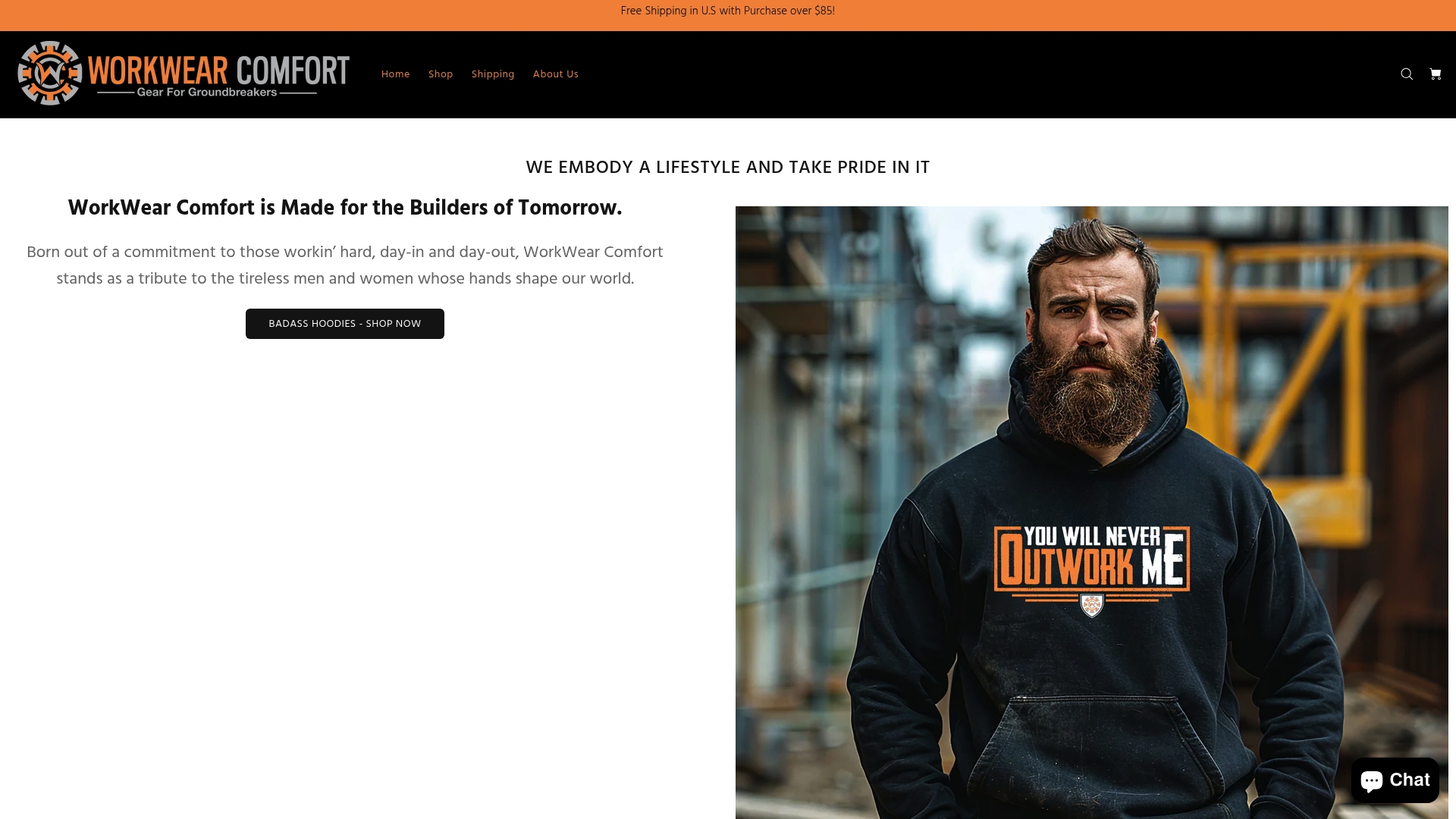
Experience the comfort and toughness you have earned. Our WorkwearComfort.com store helps you outfit yourself with apparel and accessories built for hardworking professionals just like you. Shop now and step into work with gear made for your lifestyle.
